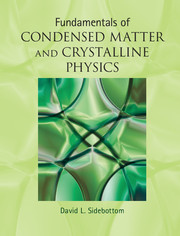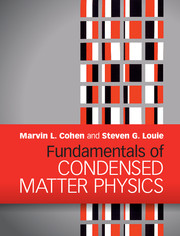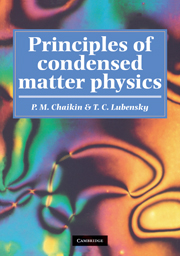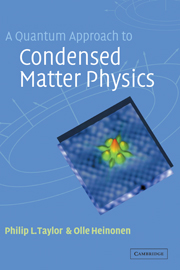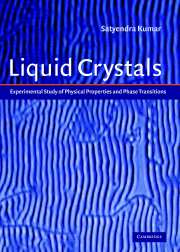Fundamentals of Condensed Matter and Crystalline Physics
This undergraduate textbook merges traditional solid state physics with contemporary condensed matter physics, providing an up-to-date introduction to the major concepts that form the foundations of condensed materials. The main foundational principles are emphasized, providing students with the knowledge beginners in the field should understand. The book is structured in four parts and allows students to appreciate how the concepts in this broad area build upon each other to produce a cohesive whole as they work through the chapters. Illustrations work closely with the text to convey concepts and ideas visually, enhancing student understanding of difficult material, and end-of-chapter exercises varying in difficulty allow students to put into practice the theory they have covered in each chapter and reinforce new concepts.
- Seamlessly merges traditional solid state physics and contemporary condensed matter physics, providing an up-to-date introduction to condensed materials for undergraduates on one-semester courses
- Structured in four parts so that students can appreciate how the subject matter in this broad field builds to produce a cohesive whole
- Illustrations work closely with the text to convey concepts and ideas visually, while end-of-chapter exercises allow students to put into practice the theory they have covered in each chapter
- Solutions manual included
Reviews & endorsements
'This book provides a superb and much needed introduction to contemporary condensed matter physics, emphasizing that the solid phase covers much more than the perfect crystals of traditional textbooks. Liquids and selected topics of soft matter are also covered. In a pedagogical tour-de-force, Sidebottom explains the concepts in the simplest possible terms, without compromising accuracy. I highly [recommend] this book.' Jeppe Dyre, Roskilde Universitet, Denmark
'Sidebottom presents the key concepts of condensed matter physics at an introductory level, and does a great job of relating different areas of condensed matter to one another, notably electronic properties of solids, and statistical mechanics of hard and soft materials. This book is an excellent choice for a senior-level introduction to condensed matter physics.' John F. Marko, Northwestern University
'Like the wind sweeping across the prairie, Sidebottom's Fundamentals of Condensed Matter and Crystalline Physics refreshes the entire landscape of solid state physics with a much needed paradigm shift away from the past fifty years. Here we find a holistic approach to contemporary condensed matter physics which seamlessly integrates the crystalline and amorphous states. Sidebottom's style is engaging, straightforward and lucid. The book will serve our students very well and deserves a prominent place on all our bookshelves as a ready reference.' Chris Sorensen, Cortelyou-Rust University Distinguished Professor, Kansas State University
'Fundamentals of Condensed Matter and Crystalline Physics succeeds at covering many fundamental concepts of solid-state and soft-matter physics and at combining them in an approachable manner. If only one undergraduate elective course slot is available for solid-state and soft matter, this text is clearly the best available option. It will also serve another important purpose: as a starting point for people who do not take such an undergraduate course.' Ivan Smalyukh, Physics Today
'I was instantly attracted to this book … [it] has a lot to commend it.' Moreton Moore, Crystallography Reviews
Product details
June 2012Adobe eBook Reader
9781139512398
0 pages
0kg
229 b/w illus. 10 tables 95 exercises
This ISBN is for an eBook version which is distributed on our behalf by a third party.
Table of Contents
- Part I. Structure:
- 1. Crystal structure
- 2. Amorphous structure
- 3. Bonds and cohesion
- 4. Magnetic structure
- Part II. Scattering:
- 5. Scattering theory
- 6. Scattering by crystals
- 7. Scattering by amorphous matter
- 8. Self-similar structures and liquid crystals
- Part III. Dynamics:
- 9. Liquid dynamics
- 10. Crystal vibrations
- 11. Thermal properties
- 12. Electrons: the free electron model
- 13. Electrons: band theory
- 14. Bulk dynamics and response
- Part IV. Transitions:
- 15. Introduction to phase transitions
- 16. Percolation theory
- 17. Mean field theory and renormalization
- 18. Superconductivity
- Appendices
- Index.

